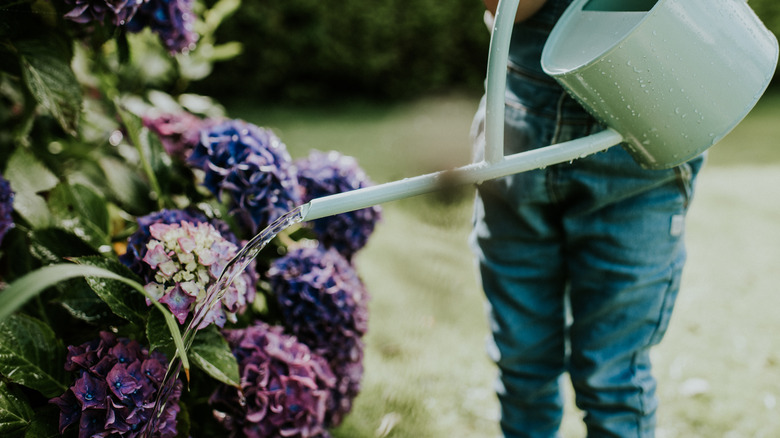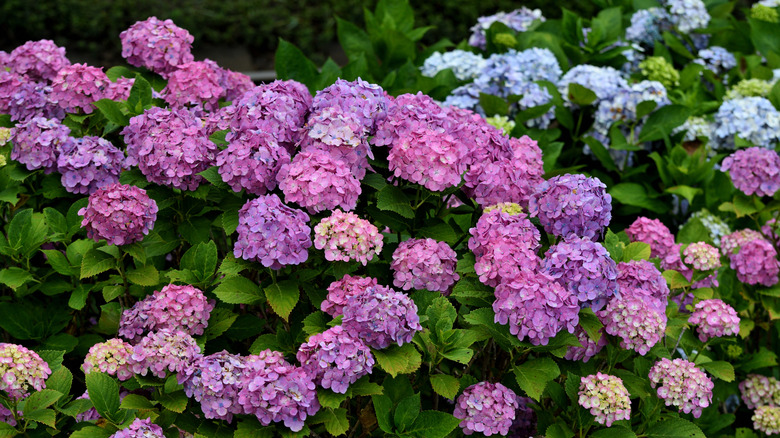Get Vibrant Hydrangea Blooms With The Best Method For Watering Them
If you've taken the time to plant and care for your hydrangeas only to find most of the beautiful pink or purple blooms you wanted simply don't materialize, you might need to take a look at your watering technique. The key is to always water hydrangeas at their base. This keeps their leaves as dry as possible to avoid plant disease and puny flowers.
Big leaf hydrangeas (Hydrangea macrophylla) grow in a wide range of climates, including USDA Plant Hardiness Zones 5 to 11. Yet, they can be tricky to water. Hydrangeas are thirsty plants that need a consistent watering schedule. Funny enough, their name literally translates to "water jar" in Greek — but that has more to do with the shape of their seeds. Hydrangeas are not drought tolerant and are particularly susceptible to stress from the heat. Yet, they can be picky about how they're watered and prefer their drink taken at soil level.
Hydrangeas hate to have their leaves left wet for a good reason. Fungal disease loves to target hydrangeas, and it is spread through droplets of water sprayed on foliage. So, if you see brown or white spots on your leaves, and you wonder why your hydrangeas are not fully blooming, then you might have been watering the plant from above, rather than at its base. Powdery mildew (that furry white growth on leaves) will also make for some puny flowers.
How to water your hydrangeas the best way
In the summer, hydrangeas typically need an inch of water a week, but during particularly hot or humid weeks, they might need as much as two inches of water. How do you know when to water your hydrangeas? There's no one-size-fits-all watering schedule, though in climates with moderate heat and rainfall, hydrangeas could even need to be watered up to three times a week.
The soil of your hydrangea bush should be wet but never soggy. You'll know that your hydrangeas need water by using a screw driver or finger test. Stick a screw driver in the soil. If it comes out clean, the soil is too dry. You'll always want bits of wet soil clinging to it. Also keep in mind that hydrangeas prefer deeper watering sessions that reach their roots, rather than shallow watering that rarely gets below the surface. Keeping a consistent watering schedule will be the easy way to bring wilting hydrangea blooms back to life.
When you do water, avoid spraying water from a hose or dumping from a water can from above on your hydrangeas. If you can, consider a soaker hose or drip method at soil level, which can keep roots nourished and leaves dry. If you must water from above, try to do so in the early morning, when the plant will have time to dry out in the sun. Never water overhead in the evening when the sun is low and the leaves will likely stay wet overnight.

